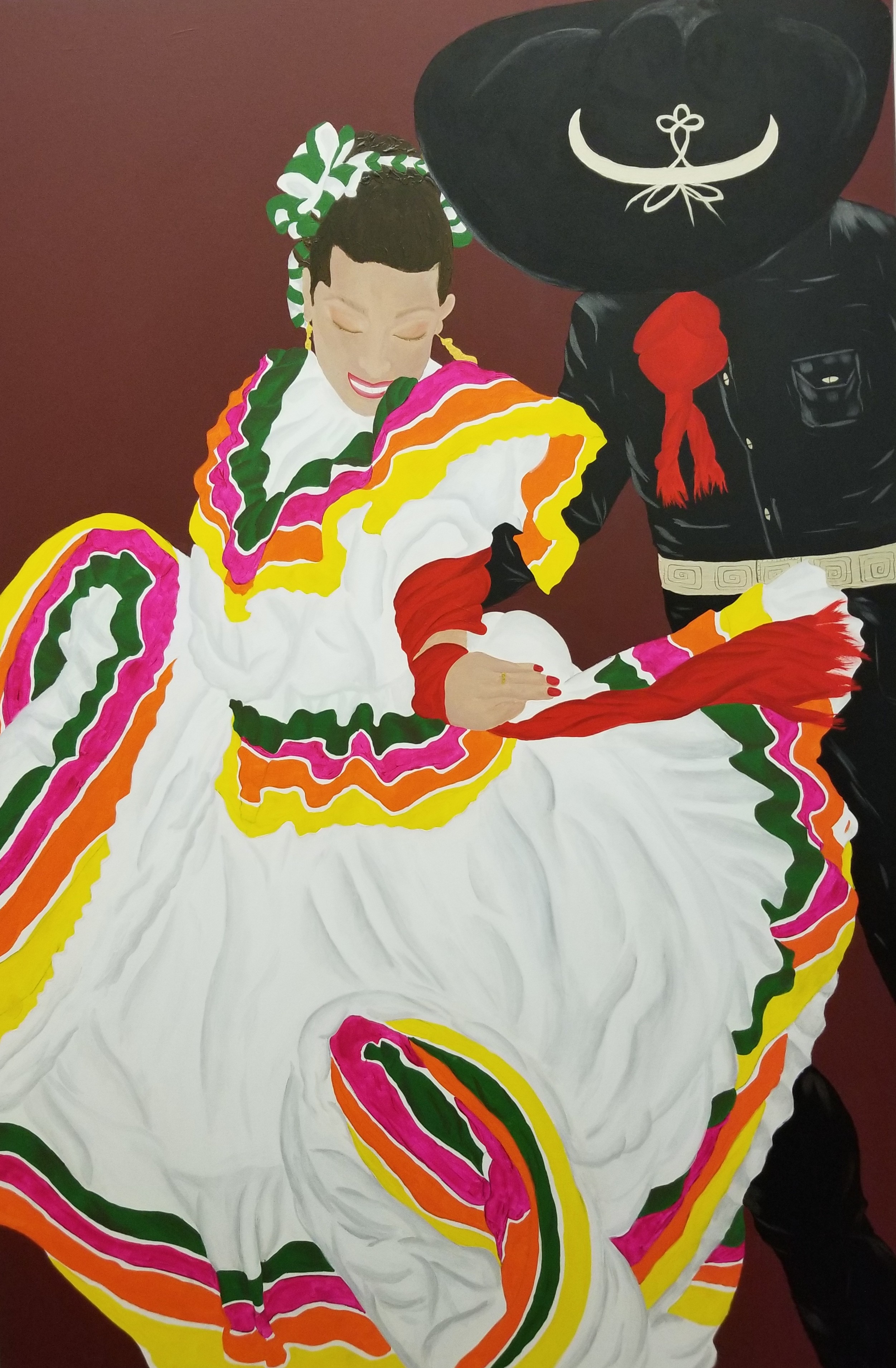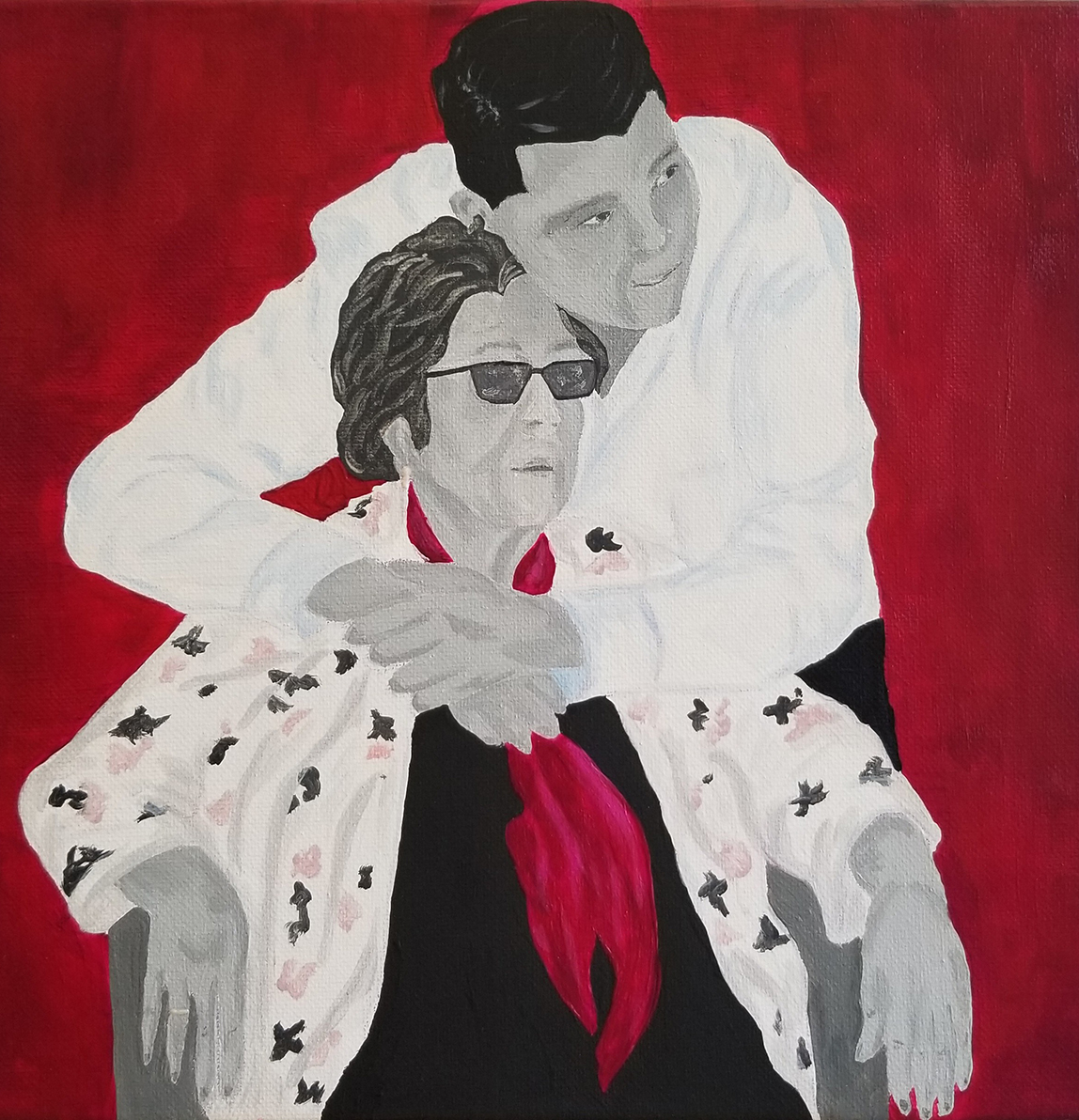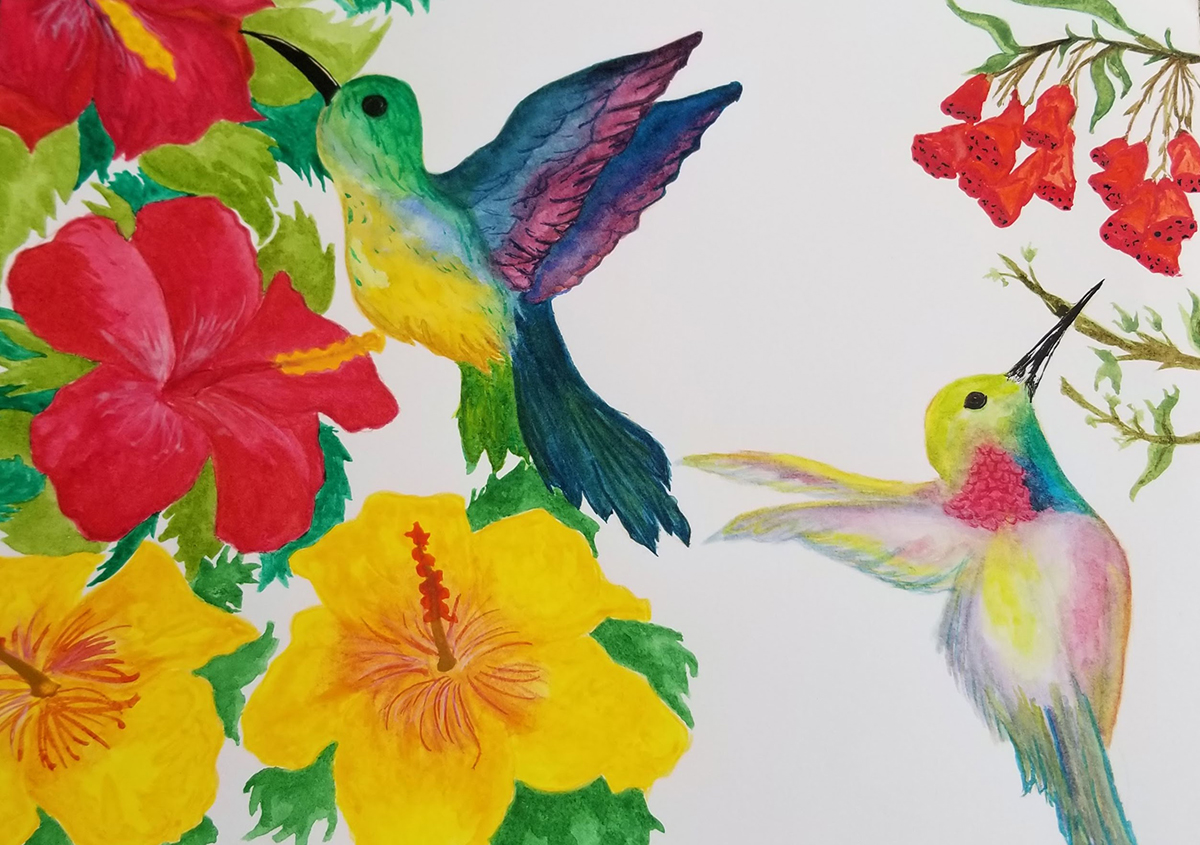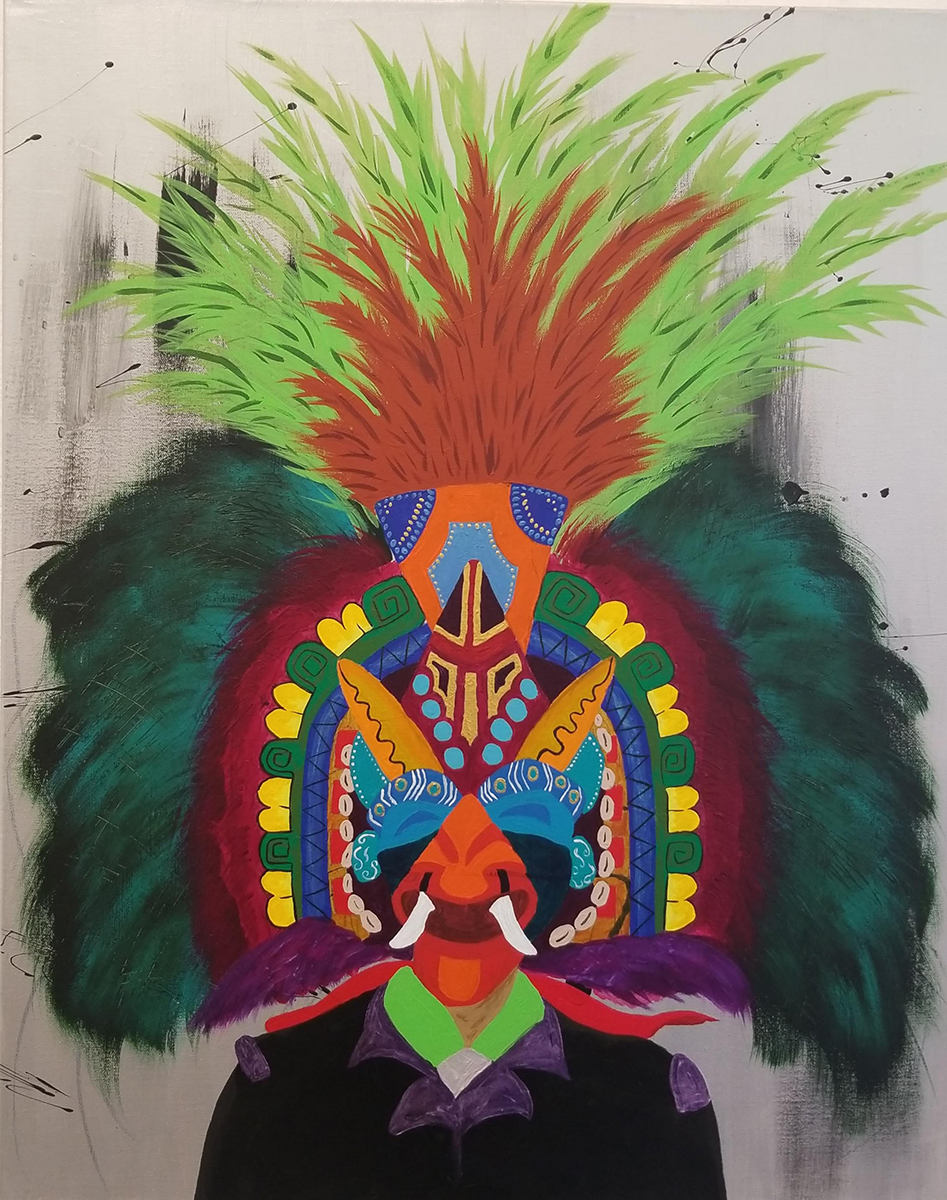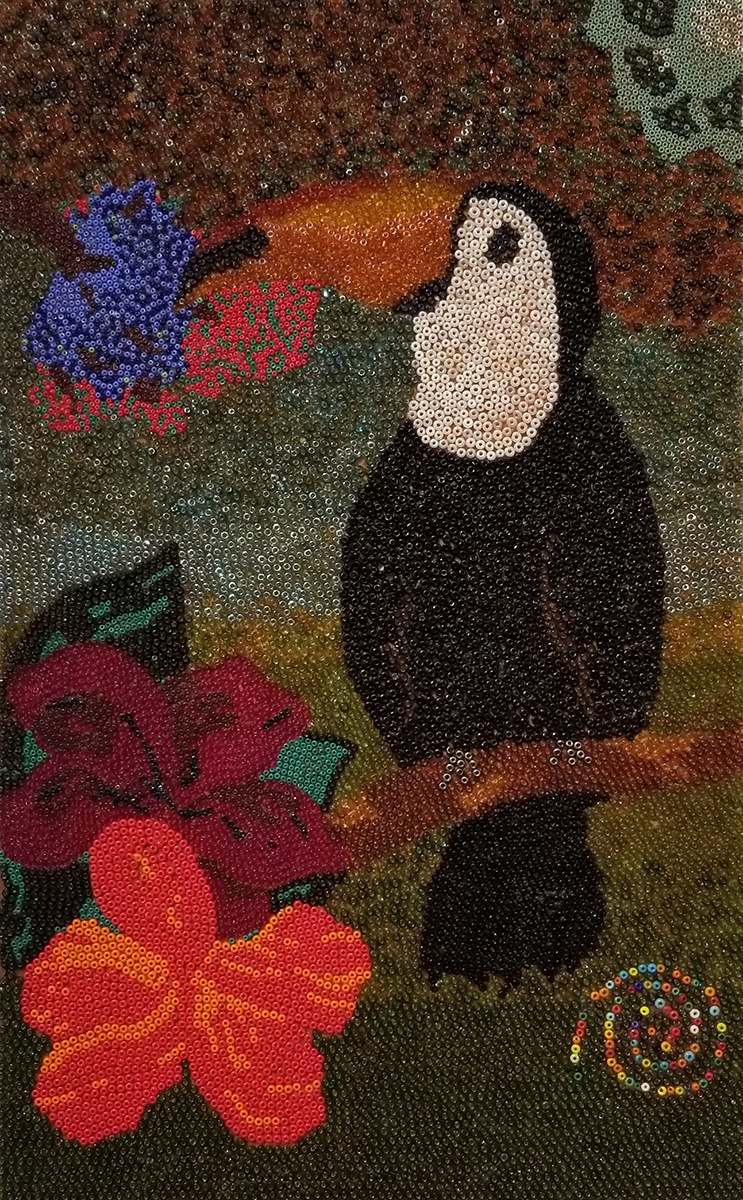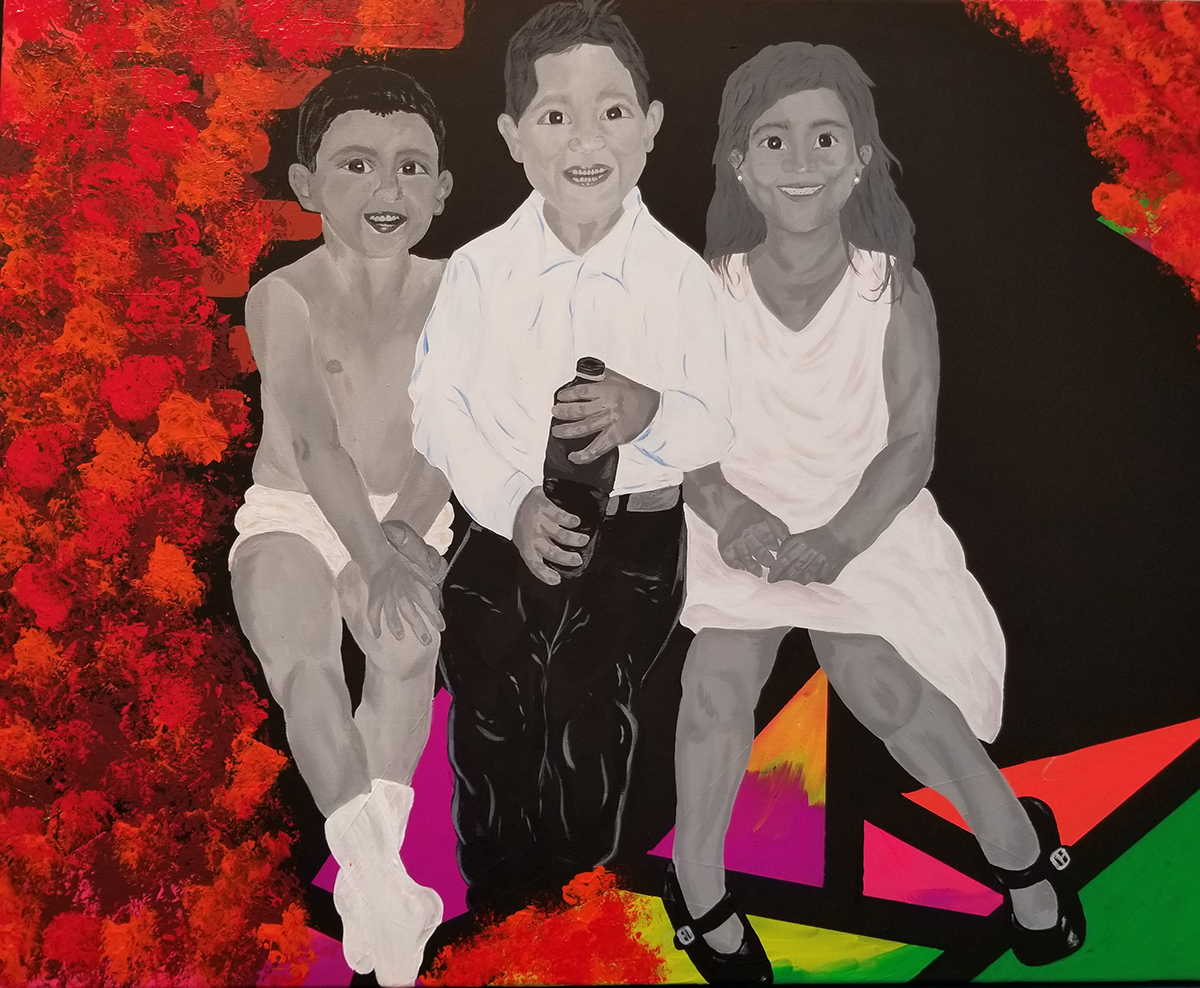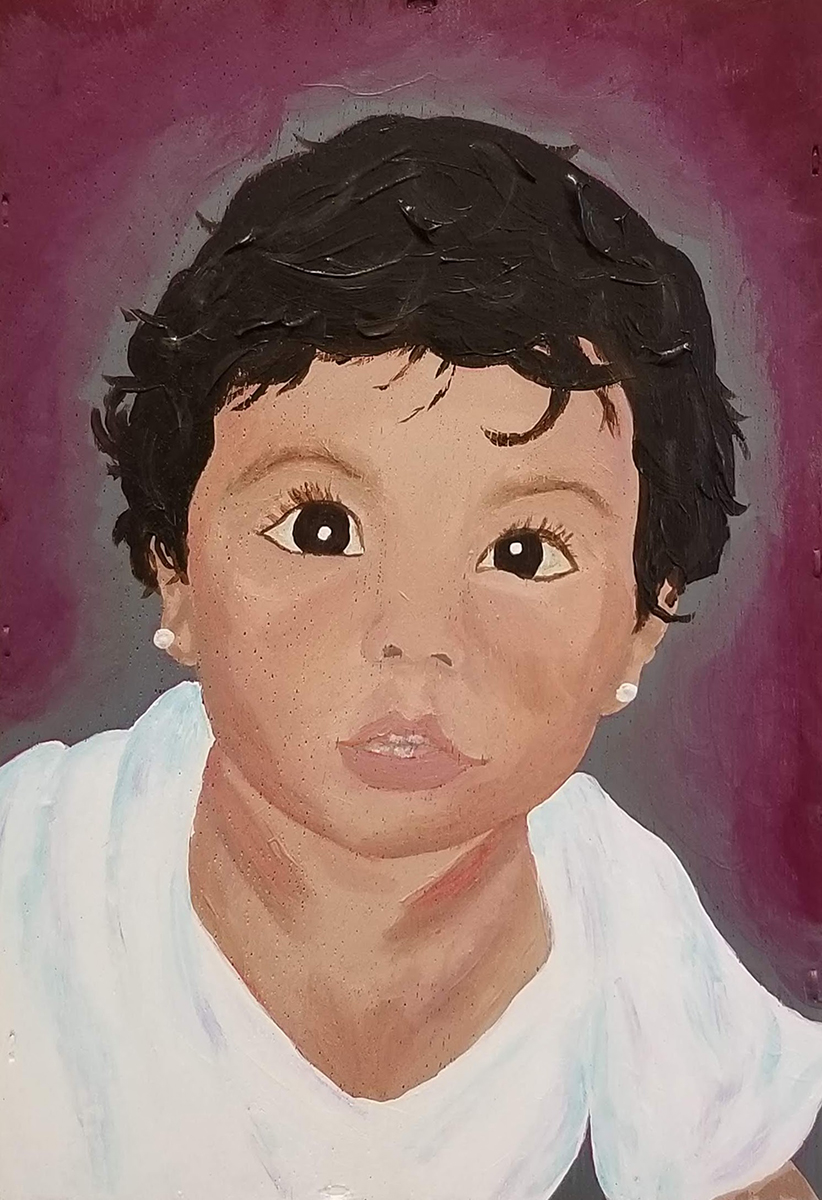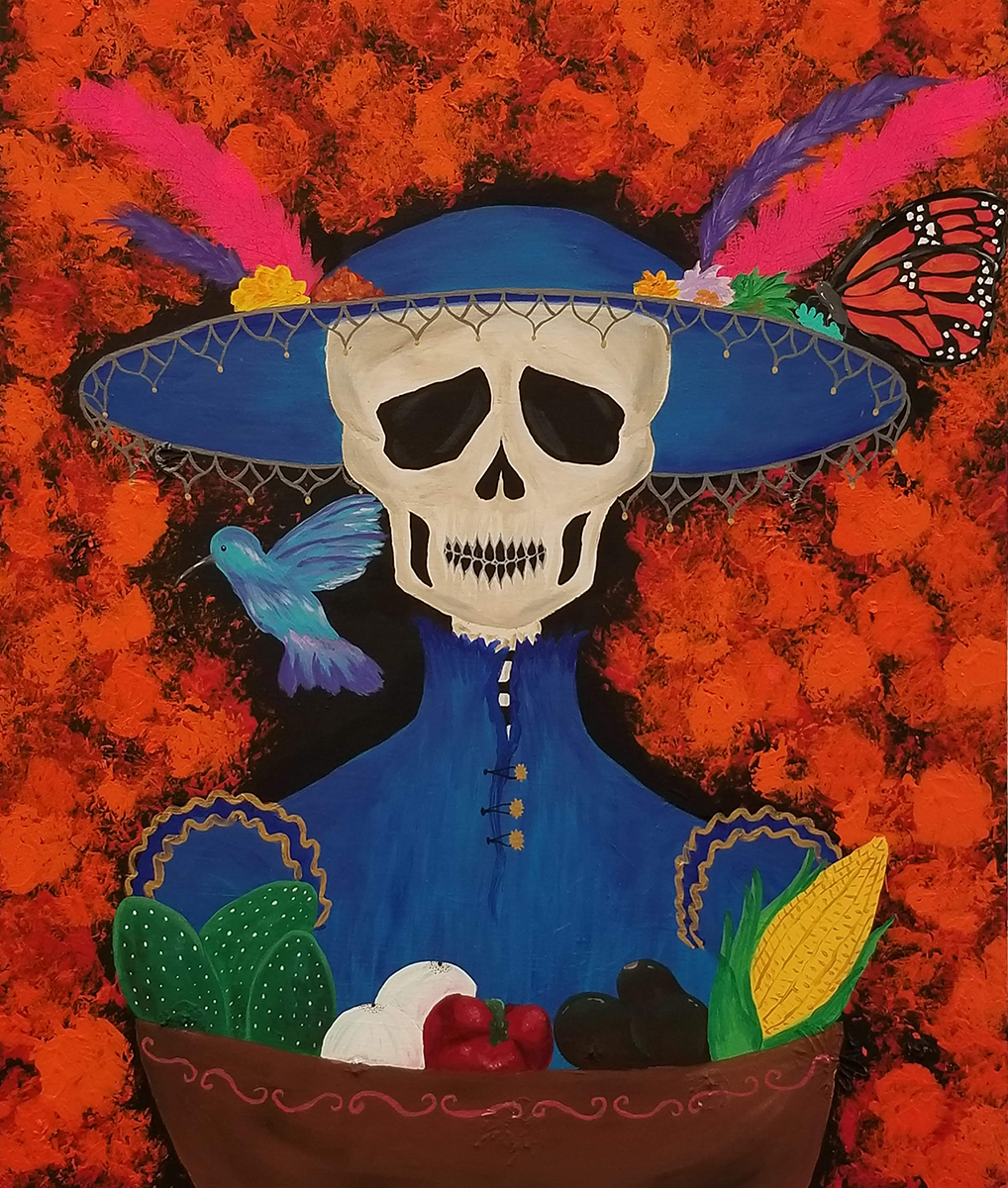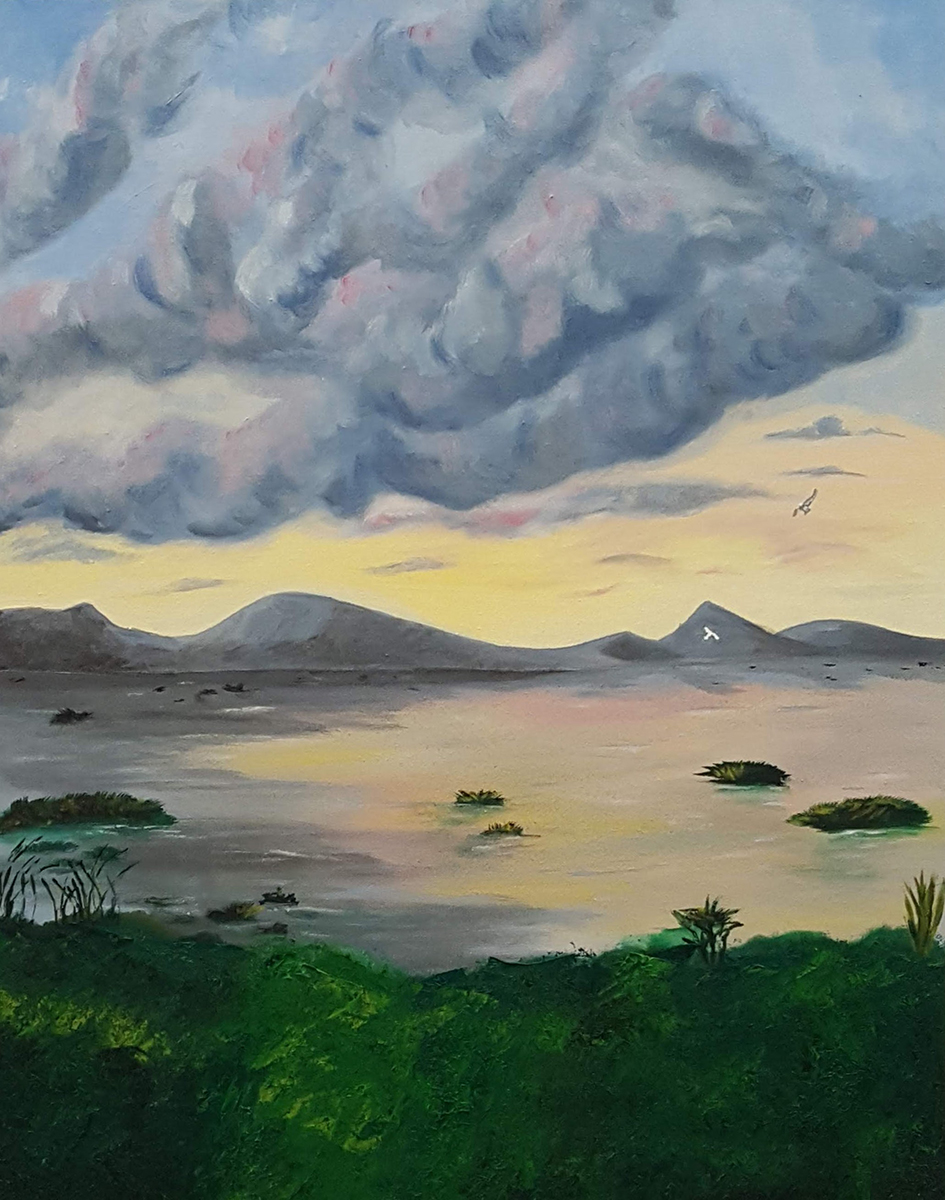Carla Cardenas
I make art because it is a way to express myself and give life to my thoughts. I like to use vibrant colors to represent my deep connections to Mexico, particularly La Palma, which is a small town in the state of Michoacan where I predominantly grew up. For me, representing my culture and Mexican heritage is extremely important. In addition to exploring rich themes of belonging, I also confront notions of separation informed by my past experiences. When I was four years old, my father was deported from the United States. It was after this that my whole family moved to Mexico. This series of events has informed my multicultural upbringing and has required me to develop certain survival skills, such as the ability to adapt to new surroundings and keep functioning despite the desire to always want to be away from where you are now and the distance of places and people.
I lived in and around La Palma from the age of four to fourteen years old. When I was fifteen, I returned to the U.S. to have a better opportunity to educate myself. In the beginning it was very difficult for me to express myself because I did not know how to fluently speak or understand English. After a couple of years back in the states, my father was incarcerated and deported again. It was after this hardship that I discovered my love for art because it helped me to transfer and document what was going on in my life to canvas.
In my current art practice I primarily paint and work with ceramics. In addition to these methods I also incorporate a variety of materials such as wax and beads. Conceptually, my work is unique because it explores things that happened in my childhood, while addressing contemporary concerns that affect my community. A perfect example is what the artisans in Mexico face. They mostly work with wood for toys and leather to make huaraches (sandals). The artisan communities are not given the necessary resources to keep making nor do they have a strong platform to sell their art for a fare price. To me this is concerning because I grew up with these people and can identify with their struggles to provide for their families with their art. In my opinion, it speaks to larger issues of class, labor, and value. It shows how little my people are valued in a society that keeps certain groups oppressed. Thus, I am invested in pushing my work to generate a greater consciousness and compassion, so that people see the value of Indigenous art and remember that it is firmly rooted in the riches of tradition, family and resiliency.
